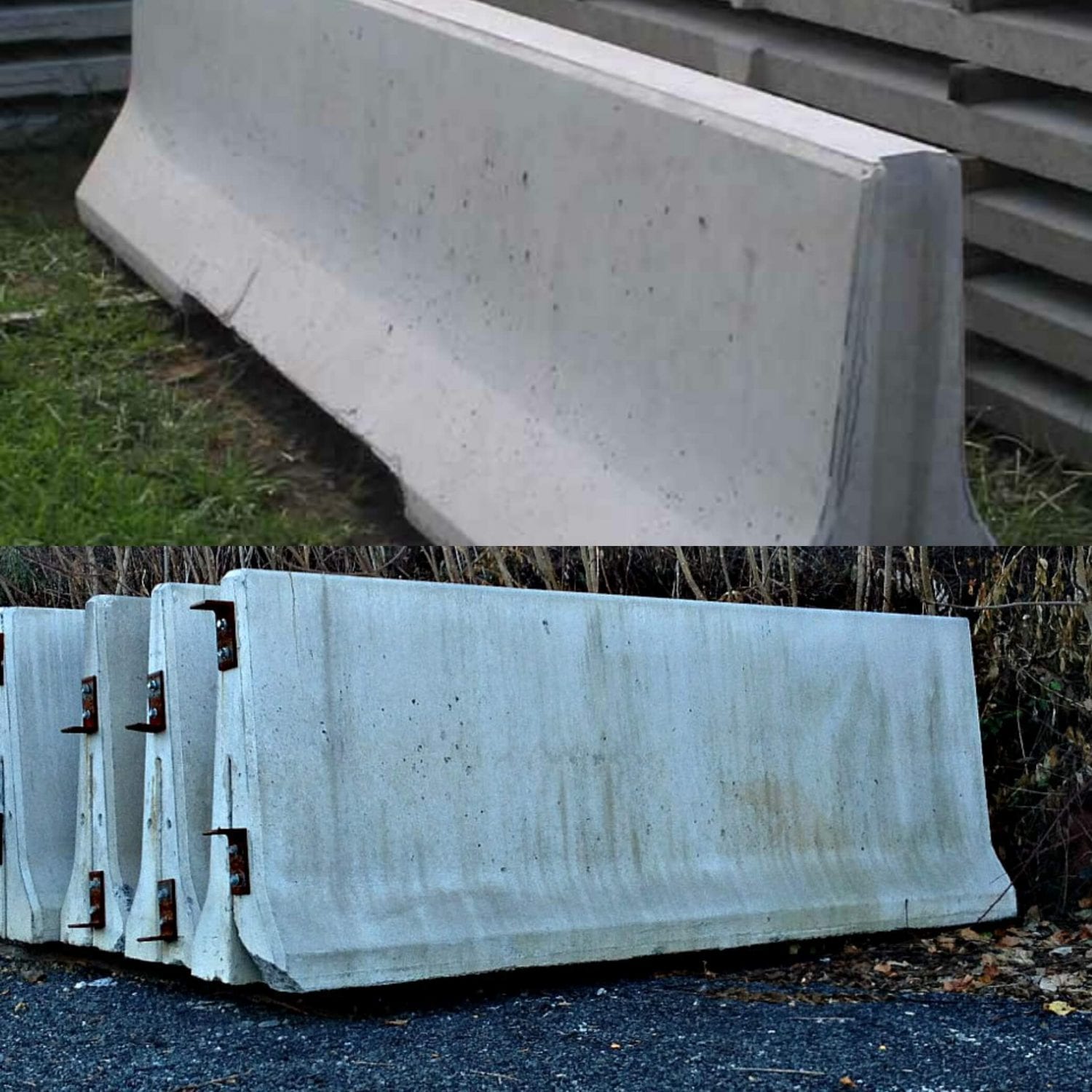

Other variants have now been created, such as the higher "Ontario Tall Wall" or the "F barrier," which has a different slope to be more effective during crashes involving smaller cars and pickup trucks. "Modern vehicles have relatively short distances between the bumper and the wheel as a result, bumper contact is followed almost immediately by wheel contact," McDevitt said.Įither way, the vehicle doesn't get through the barrier and is deflected. As the vehicle moves in this direction it becomes nearly parallel with the barrier, allowing the wheels to then be able to contact the lower slope. He explained that at higher impact angles the bumper hits the barrier and begins to slide upward. McDevitt wrote in a 2000 article about concrete barriers for Public Roads magazine. "For the more common shallow-angle hits, the (New Jersey barrier)-shape is intended to minimize sheet metal damage by allowing the vehicle tires to ride up on the lower sloped face," Charles F. The original Jersey barrier is a little less than 3 feet tall, with the first 2 inches rising straight up, then 10 inches rising at a moderate slope and then the rest rising nearly vertically. More engineering goes into these barriers than might meet the eye. For some perspective: one barrier is 20 feet long, so that means 264 barriers per mile of any given project, according to Highway Operations Superintendent Ray Baca. Its most obvious purpose is separating lanes, including those heading in opposite directions.Īnd we need a lot of them. Since then it's become ubiquitous around the country due to its modular design and functionality. This type of barrier was developed in New Jersey in the 1950s.

Valley residents may have seen them recently as our crews have set these short concrete walls up along the Loop 101 Pima Freeway to prepare a safe zone for crews to get started on a widening project, as seen in the photo above. The Barrier Lift is a patented design under US Patent 6331025.Īll Kenco lifting products in the Kenco store are hand tested by our engineering staff before it leaves our facility.If you've ever driven through a construction zone, then odds are you're familiar with the humble Jersey barrier, even if you didn't know its name. Kenco’s patented below the hook lifting products are designed, manufactured and tested in compliance with the latest revisions of the ASME B30.20 and BTH-1 standards and are accepted by OSHA, CanOSH, as well as virtually all other world wide standards.

If you need even more lifting capacity, we now offer the Kenco Jersey Barrier Lifting Device! CERTIFIED PERFORMANCE Custom models can be built to accommodate any barrier you need to grab. Standard models can be used on any median barrier with a 6-12″ top and range in capacities from 9,000 to 40,000 pounds. But they actually made their first appearance on a treacherous. These Jersey barriers or Jersey walls are used to separate lanes of traffic with a goal of minimizing vehicle crossover. For a quote to your shipping destination please call us or use the Quick Quote button below. This action continues with each cycle of the barrier grab. These omnipresent wedges of concrete are universally referred to as Jersey barriers. These precast concrete barriers are available in various regions around the U.S. These barriers are 12.5 feet long, 32 inches tall, and 24 inches wide. We also handle the F style concrete traffic barriers. Once set firmly back on the ground and tension is released, the wall is released automatically. Jersey style barriers are 10 feet long, 32 inches tall and 24 inches wide at the base. Both single slope and F-shape barrier wall are held securely during the process. MATCHES SLOPE OF WALLįree-swiveling pad angles adjust to match the slope of the wall. You can see more information in the Kenco lifting device manuals. There are no auxiliary hydraulic hookups required. Elastomer pads clamp tightly against the wall surface.

By positioning and setting the Kenco Barrier Lift onto the wall, the lifting process begins. The mechanical scissor action grips concrete automatically. See why this cement jersey barrier attachment is the choice of every major contractor and governmental agency in the United States. It is our flagship product! There is simply no other barrier wall clamp that compares! It is the strongest, safest, most-trusted barrier picker in the industry. Kenco created the first concrete barricade lift 30 years ago. BARRIER LIFT THESE AUTOMATIC TONGS WILL DOUBLE PRODUCTION AND CUT TIME IN HALF.


 0 kommentar(er)
0 kommentar(er)
